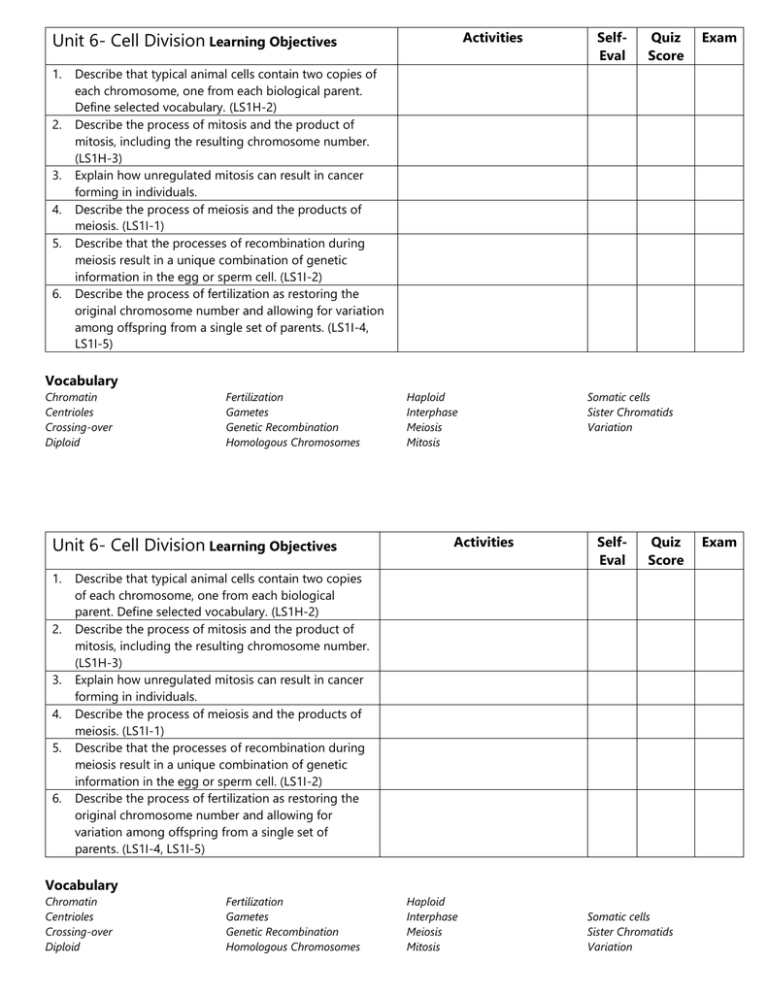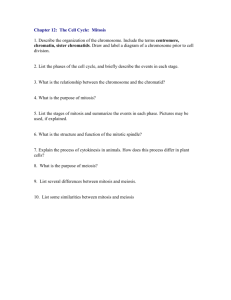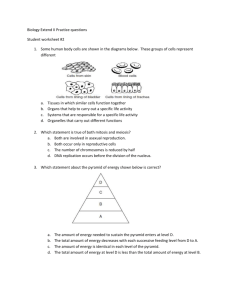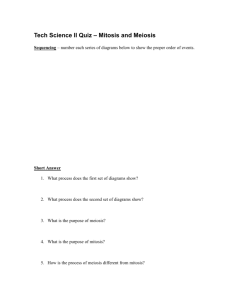Unit 6- Cell Division Learning Objectives Activities Self
advertisement

Activities Unit 6- Cell Division Learning Objectives 1. 2. 3. 4. 5. 6. SelfEval Quiz Score Exam Describe that typical animal cells contain two copies of each chromosome, one from each biological parent. Define selected vocabulary. (LS1H-2) Describe the process of mitosis and the product of mitosis, including the resulting chromosome number. (LS1H-3) Explain how unregulated mitosis can result in cancer forming in individuals. Describe the process of meiosis and the products of meiosis. (LS1I-1) Describe that the processes of recombination during meiosis result in a unique combination of genetic information in the egg or sperm cell. (LS1I-2) Describe the process of fertilization as restoring the original chromosome number and allowing for variation among offspring from a single set of parents. (LS1I-4, LS1I-5) Vocabulary Chromatin Centrioles Crossing-over Diploid Fertilization Gametes Genetic Recombination Homologous Chromosomes Unit 6- Cell Division Learning Objectives 1. 2. 3. 4. 5. 6. Haploid Interphase Meiosis Mitosis Activities Somatic cells Sister Chromatids Variation SelfEval Quiz Score Describe that typical animal cells contain two copies of each chromosome, one from each biological parent. Define selected vocabulary. (LS1H-2) Describe the process of mitosis and the product of mitosis, including the resulting chromosome number. (LS1H-3) Explain how unregulated mitosis can result in cancer forming in individuals. Describe the process of meiosis and the products of meiosis. (LS1I-1) Describe that the processes of recombination during meiosis result in a unique combination of genetic information in the egg or sperm cell. (LS1I-2) Describe the process of fertilization as restoring the original chromosome number and allowing for variation among offspring from a single set of parents. (LS1I-4, LS1I-5) Vocabulary Chromatin Centrioles Crossing-over Diploid Fertilization Gametes Genetic Recombination Homologous Chromosomes Haploid Interphase Meiosis Mitosis Somatic cells Sister Chromatids Variation Exam






